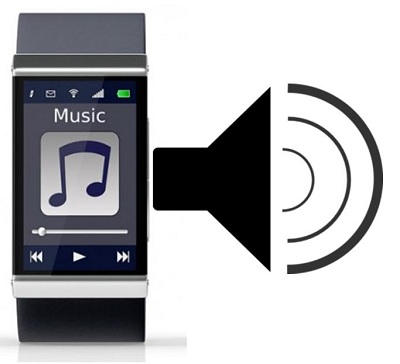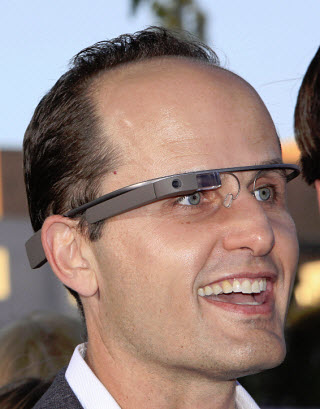The wearable technology device has just been updated to include volume controls, among other things.
Pebble recently rolled out a range of new updates that have added some rather small but quite meaningful improvements to its popular smartwatch, including a few that have been expected for some time now.
Among these updates, one of the most significant is the addition of volume controls to this wearable tech.
Aside from that, the smartphone now also has the ability to recognize apps from the launcher of the device. Owners have been waiting for a long time for the Pebble to offer them the opportunity to control the music volume from their wristwatches, which have been able to control the playback since the wearable tech device first hit the market shelves.
The company announced in a blog post that it was bringing this new control to its smartwatch.
 The blog post read that “It’s been a long time since we first demoed volume control in the Pebble Music app back in the day, so we’re really glad to be bringing this feature onboard.” The wearable tech update also gave the ability for apps to be recognized in its launcher, and for those applications to be manually sorted.
The blog post read that “It’s been a long time since we first demoed volume control in the Pebble Music app back in the day, so we’re really glad to be bringing this feature onboard.” The wearable tech update also gave the ability for apps to be recognized in its launcher, and for those applications to be manually sorted.
In previous versions, the order in which the applications appeared had been static and was not customizable by the wearer. That has been changed in this latest update so that users are able to place items within the launcher into the order that they desire by holding down the select button until the app appears to tremble. It can then be moved to its new position on the list.
These two small but meaningful additions were added as a part of an update to the firmware, itself. This means that the smartwatch users will be required to update their current mobile device app by selecting the support menu and the “check for updates” option. The users of the Pebble through iOS will need to update their iOS application before they will be able to obtain their new firmware. That app was also updated just recently to be able to support the new firmware as well as to add support for iBeacon.
Alamo Drafthouse has created a new mobile device policy.
The movie theater chain, which does not fool around when it comes to the regulations it places on its moviegoers in relation to the use of mobile gadgets inside its walls, has taken a step beyond its anti-texting policy and has banned its patrons from using Google Glass within its cinemas.
Glass may not cause disruptions but it could lead to movie piracy.
Alamo Drafthouse Founder and CEO Tim League said that the banning of the wearable device was not for the same reasons as the policies that had been put into place for smartphones. With Glass, keeping a movie theater dark and quiet is not the issue.
Glass wearers are not likely to distract and interrupt other moviegoers from watching the film, as is the case with handheld mobile devices. However, the problem with this wearable technology is it can enable its user to effortlessly and clandestinely record the movie playing on the screen. In other words, Google Glass could make it easy for a person to tape and pirate a movie.
 “We’ve been talking about this potential ban for over a year,” said League. He added that he had personally demoed Google Glass previously. “At that time, I recognized the potential piracy problem that they present for cinemas. I decided to put off a decision until we started seeing them in the theater, and that started happening this month.”
“We’ve been talking about this potential ban for over a year,” said League. He added that he had personally demoed Google Glass previously. “At that time, I recognized the potential piracy problem that they present for cinemas. I decided to put off a decision until we started seeing them in the theater, and that started happening this month.”
Alamo Drafthouse is not the first movie theater chain to ban Google Glass.
In January of this year, AMC banned the wearable from its theaters when an incident involving the eyewear occurred at one of their Ohio theaters, which resulted in the calling of homeland security officers to interrogate a customer who was wearing Glass while watching Jack Ryan: Shadow Recruit. AMC stated that wearing a device with video recording capabilities isn’t “appropriate at the movie theater.”
Although Alamo Drafthouse has prohibited Google Glass, the policy is not exactly clear-cut. Just like cell phones, the device will need to be shut off once the trailers begin but, in some cases, users may still need to wear the device in situations where they need to rely on the prescription lenses in the glasses to view the screen. Thus, depending on the circumstance, a specific policy may need to be enforced on a case by case basis.
 The blog post read that “It’s been a long time since we first demoed volume control in the Pebble Music app back in the day, so we’re really glad to be bringing this feature onboard.” The wearable tech update also gave the ability for apps to be recognized in its launcher, and for those applications to be manually sorted.
The blog post read that “It’s been a long time since we first demoed volume control in the Pebble Music app back in the day, so we’re really glad to be bringing this feature onboard.” The wearable tech update also gave the ability for apps to be recognized in its launcher, and for those applications to be manually sorted.
 “We’ve been talking about this potential ban for over a year,” said League. He added that he had personally demoed Google Glass previously. “At that time, I recognized the potential piracy problem that they present for cinemas. I decided to put off a decision until we started seeing them in the theater, and that started happening this month.”
“We’ve been talking about this potential ban for over a year,” said League. He added that he had personally demoed Google Glass previously. “At that time, I recognized the potential piracy problem that they present for cinemas. I decided to put off a decision until we started seeing them in the theater, and that started happening this month.”